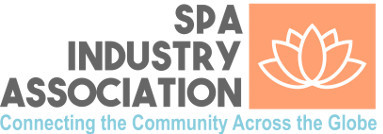
New methods of working, new ways of engaging with guests, and, most importantly, new cleaning standards are the benchmarks by which people will evaluate enterprises. The wellbeing and spa sector will, without a doubt, undergo significant changes as a consequence of the epidemic.
After all, personal attention and the human touch are at the heart of health and spa experiences. Regardless of the adjustments, one thing will stay constant: people’s need to “feel good.” It’s not just about a single massage or one cosmetic treatment when it comes to health and spa operations. They aim to provide people self-assurance, empowerment, and a break from their hectic, linked life.
So, how can spa enterprises ensure proper safety standards? What steps can ensure the security and safety of their employees? In the modern world, it has become essential to keep the safety of workers and customers an utmost priority. Dig in to know the methods and tips to maintain clean and safe practices for the proper functioning of your spa.
What are the best ways to practice safety at a spa?
While safety and cleanliness have long been influential in the wellness sector, the current procedures will not suffice. It will be necessary to adopt new processes. Given the circumstances, you’ll need to maintain higher levels of sanitation and cleanliness. Here are some tips for practicing in your spa that’ll re-establish their faith and trust in your service:
- Cut off any needless interaction:
You want your entity to be a haven for your customers. Even if your services need individuals closer than six feet, you can still keep your customers (and staff) safe at your salon or spa. How? Remove the requirement for customers to utilize a standard tablet or clipboard by implementing virtual check-in and sending agreements and forms to them to fill out before they come.
You may also protect the employees by investing in PPE kits and single-use towels. Even the security guard and everyone associated with the premises must also use protective gloves at all times.

- Design of the spa:
Your spa or salon’s design must include more than simply providing a pleasant, luxury atmosphere for your customers and employees; it must also be built and furnished with protection in mind.
A healthy, well-ventilated space encourages a safe work environment and greater customer satisfaction. The following are essential characteristics to look for in a treatment room or area, whether you are a spa or parlor manager, a representative of the staff, or a specialist:
Size: To ensure appropriate mobility of the aesthetician in the space, the treatment room or area must be at least 80 sq ft (8 X 10) in size. Both the professional and the customer should never feel claustrophobic.
Proper ventilation: The Occupational Safety and Health Administration (OSHA) offers essential ventilation standards for nail service rooms or areas and the use of formaldehyde in hair care, but adequate ventilation is also vital for skincare practitioners and the client’s health.
- Cleaning and disinfecting chemicals, as well as fumes from skincare procedures, must be thoroughly removed.
- To provide both intake and exit of air, the room must have air vents.
- Vents in the room must work correctly and be adjusted for two or more people.
- The ergonomics of the spa:
The technician’s workspace should be as pleasant as possible to minimize pressure on the hands, head, and back. Some things to take care of regarding the setting of their space are:
- If feasible, adjust the height of the face table.
- Remember to line the seat with the treatment table for the proper height and location while conducting services when setting up.
- The technician’s feet should lie flat on the ground, and their arms should be below their chest level.
- Place the supply wagon or counter as near as possible to the treatment table.

- Sterilization vs. disinfection:
Disinfection is the process of treating a surface to kill disease-causing microorganisms. In contrast, all microbiological life is destroyed during sterilization. Each treatment room must have a wet EPA-registered cleaner on hand to sanitize equipment and materials. All instruments must be adequately cleaned before being put in the disinfectant solution. It’s essential to remember that an ultraviolet (UV) cleaner is only used for safekeeping and does not disinfect equipment.
- Do not go soft on security checks:
Make sure to check every visitor that enters your spa. You should display sanitary requirements in many locations of your salon and spa. Maintain a plan for an appropriate procedure in each room, and cleanse and disinfect after each usage by following the guidelines, using a state-approved disinfectant or a 70% isopropyl alcohol mixture. Also, follow the manufacturer’s instructions for changing the high-level sanitizer solution in the bottle. Neglecting any of these issues may become a severe hazard to your customers and employees.
- Simplify your processes:
You should simplify your processes in general, just as you should modernize your customers’ experiences and reduce interaction whenever possible. It’s simple to guarantee you’ll have time to sanitize between visits when you schedule online. You may even arrange for customers to come at different times. Perhaps offering your full-service meal isn’t the best option right now. To shorten the service cycle time, several spas encourage customers to arrive with damp, clean hair.
In conclusion
The desire to minimize unwanted interaction will result in a new array of spa standards. While masks and gloves are expected to become standard equipment, the post-pandemic spa business will be about more than simply being clean; it will also be about being perceived as pure. The tips mentioned above will help you see the changes that you need to make your spa customer-friendly.



